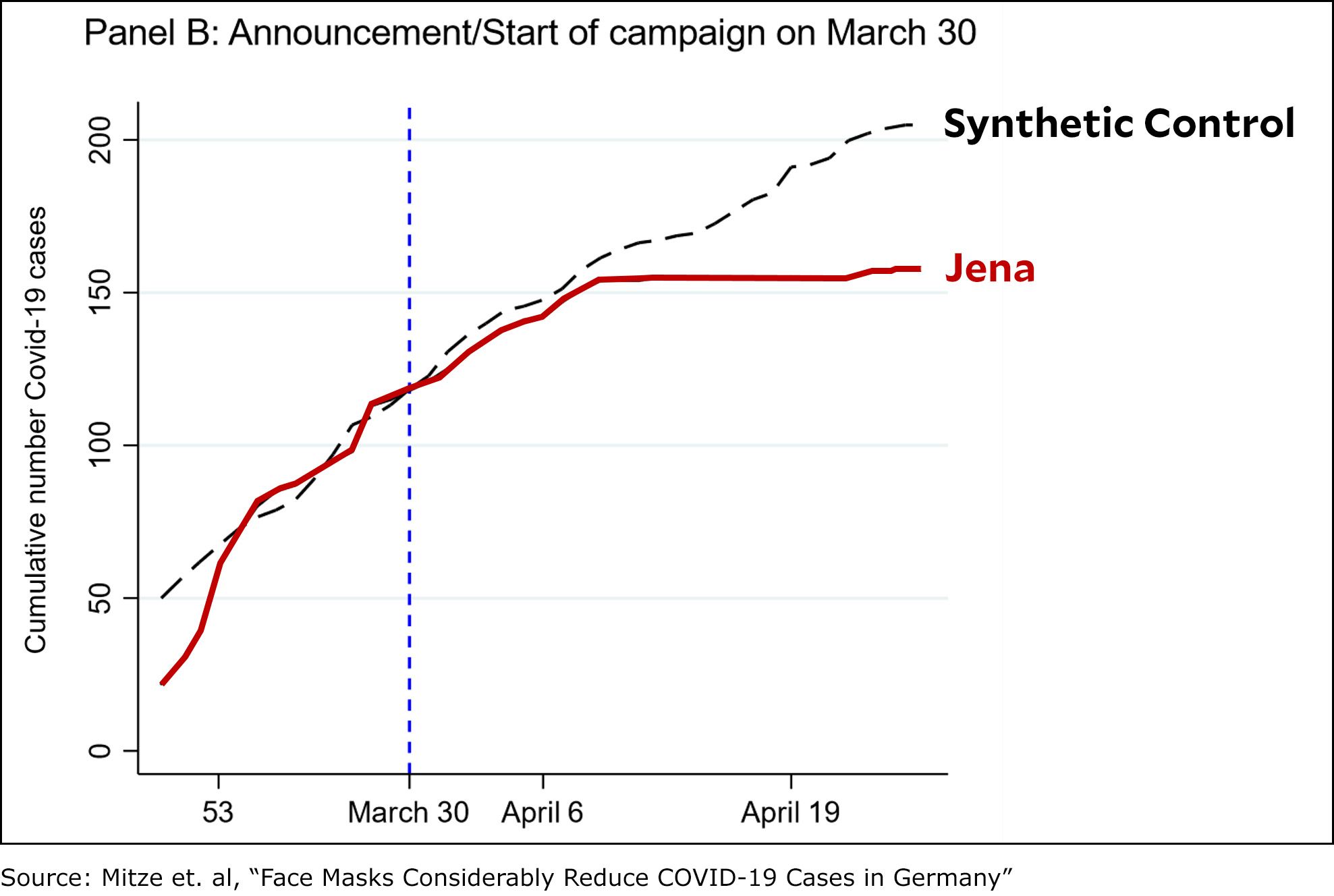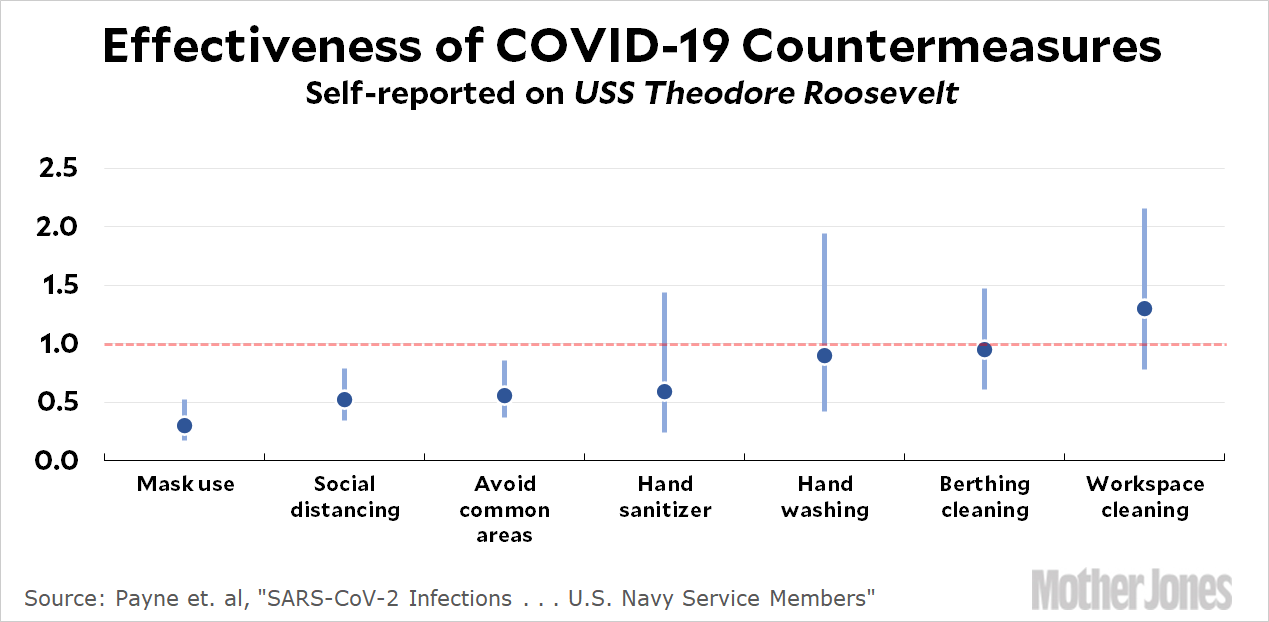How useful is mask wearing? Two new studies suggest it works pretty well. First up is a study from Germany that compared the city of Jena, where mask wearing became compulsory early on, with a “synthetic Jena” designed to be similar to the real Jena. Here are the results:

The authors believe the introduction of face masks to Jena had a very substantial effect on the spread of COVID-19:
We believe that the reduction in the growth rates of infections by 40% to 60% is our best estimate of the effects of face masks….We should also stress that 40 to 60% might still be a lower bound. The daily growth rates in the number of infections when face masks were introduced was around 2 to 3%. These are very low growth rates compared to the early days of the epidemic in Germany, where daily growth rates also lay above 50%. One might therefore conjecture that the effects might have been even greater if masks had been introduced earlier.
Next up is a CDC study of the COVID-19 outbreak on the USS Theodore Roosevelt. The biggest reductions in virus spread are represented by the numbers that are the furthest below one:

Mask use is the most effective countermeasure, followed by social distancing and avoiding common areas. Hand sanitizer use may also be effective, but the error bars extend above one, so we can’t be sure.
These are just two studies, both with flaws. The Jena study is a single city and depends on the quality of the synthetic control constructed by the authors. The Roosevelt study is based on an artificial environment with a non-random sample. As always, more research is needed. Nonetheless, both of these point in the same direction: mask wearing is highly effective in halting the spread of COVID-19.

















